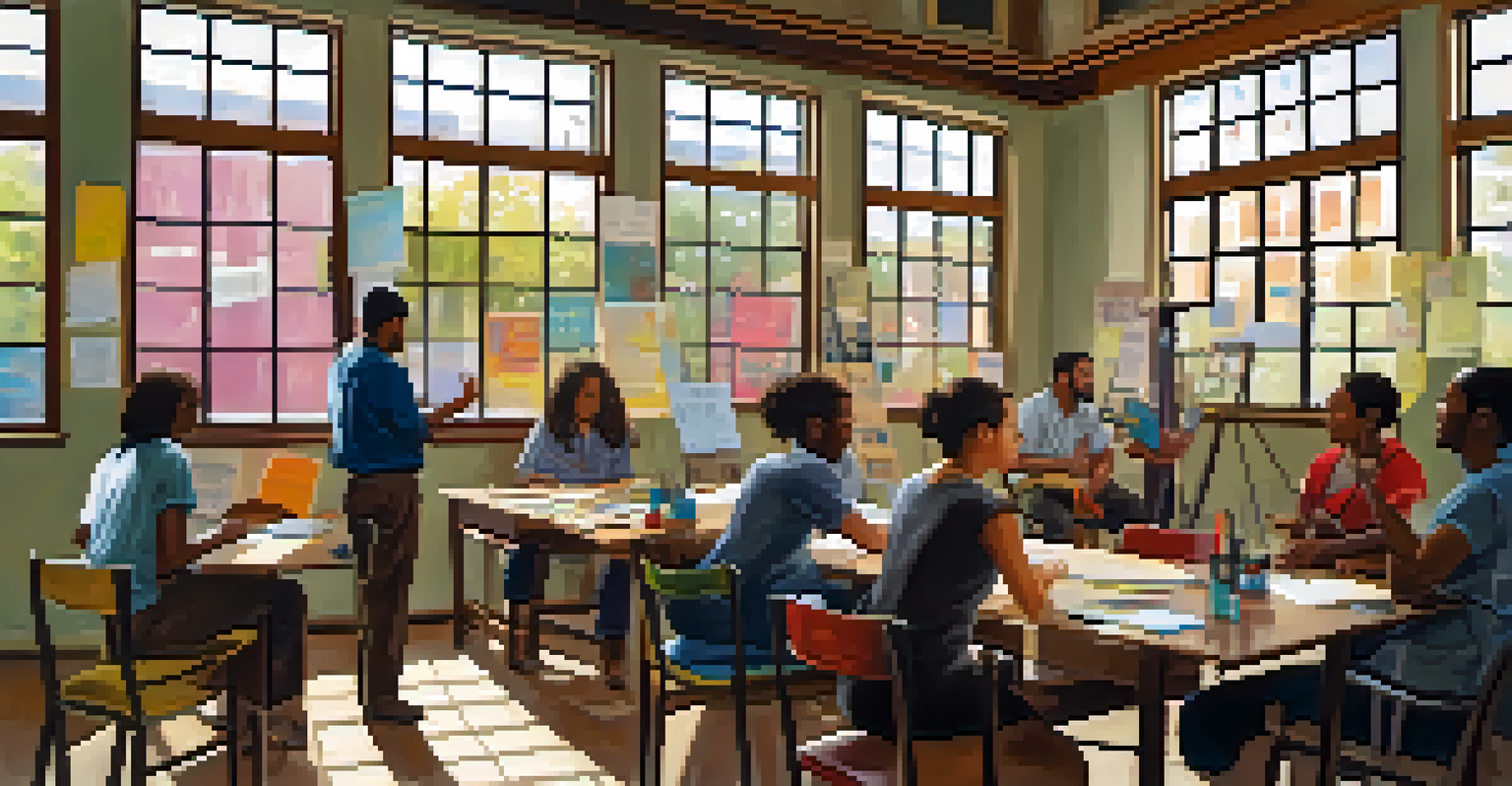De-escalation Techniques: A Key to Effective Self Defense

Understanding De-escalation in Self-Defense Scenarios
De-escalation is the art of calming a potentially volatile situation before it escalates into a conflict. In self-defense, this technique can be crucial, as it often allows you to avoid physical confrontation altogether. By focusing on communication and understanding, you can create an environment that reduces tension and aggression.
The greatest weapon against stress is our ability to choose one thought over another.
Imagine you're walking down the street and someone approaches you aggressively. Instead of retaliating or getting defensive, employing de-escalation techniques can help you navigate the situation more safely. This involves active listening, maintaining a calm demeanor, and using non-threatening body language.
In essence, de-escalation is not just about avoiding a fight; it’s about defusing a situation with empathy and respect. By honing these skills, you can turn a potential threat into a peaceful resolution.
The Importance of Body Language in De-escalation
Body language plays a vital role in how we communicate, especially in tense situations. When trying to de-escalate an encounter, your posture, facial expressions, and gestures can either calm or provoke the other person. For instance, an open posture and relaxed stance can signal that you mean no harm.

Consider how a simple smile or nod can diffuse tension. When you project calmness through your body language, it encourages the other person to mirror that energy. This subtle exchange can create a more conducive atmosphere for dialogue.
De-escalation prevents conflict
Using communication techniques can help calm situations before they escalate into physical confrontations.
Moreover, being aware of the other person's body language is equally important. By reading their cues, you can adjust your approach to address their concerns, thereby increasing the chances of a peaceful outcome.
Active Listening: A Powerful De-escalation Tool
Active listening is more than just hearing words; it’s about fully engaging with the speaker. In a confrontational situation, showing that you are genuinely listening can help lower defenses. Techniques include nodding, maintaining eye contact, and summarizing what the other person has said.
The best way to resolve conflict is through understanding and communication.
For example, if someone is upset and you simply repeat their concerns back to them, it demonstrates that you value their feelings. This can transform a heated exchange into a constructive conversation, allowing you both to find common ground.
Additionally, by acknowledging their emotions without judgment, you can foster trust and encourage them to express themselves more calmly. This approach not only helps in de-escalating the situation but also promotes mutual respect.
Using Verbal Techniques to De-escalate Conflict
Words can be incredibly powerful, especially when it comes to de-escalation. Using a calm, steady voice can help soothe an agitated individual, while aggressive or loud tones can escalate a situation quickly. Phrasing your words carefully can make a significant difference in how your message is received.
For instance, instead of saying, 'You need to calm down,' try, 'I can see that you're upset; let's talk about it.' This approach validates their feelings while steering the conversation away from confrontation. It encourages collaboration rather than conflict.
Body language influences outcomes
Your posture and gestures can either ease tension or provoke aggression, making body language a crucial element in de-escalation.
Moreover, asking open-ended questions can also facilitate dialogue. Questions like, 'What do you think we can do to resolve this?' invite participation and demonstrate that you are willing to work together for a solution.
Recognizing Triggers and Emotions in Conflict
Understanding the triggers that lead to aggression is key to effective de-escalation. Emotions often run high in conflict situations, and being able to recognize these feelings can help you navigate the scenario more effectively. For instance, fear or frustration can manifest as anger, so addressing the root cause can help deflate the situation.
Think about how certain phrases or actions might provoke someone—like invading personal space or using confrontational language. By being aware of these triggers, you can adjust your approach to minimize potential escalation.
Additionally, by empathizing with the other person's emotional state, you create a connection that can lead to resolution. Acknowledging their feelings can help you both move toward a more peaceful outcome.
The Role of Empathy in De-escalation Techniques
Empathy is the ability to understand and share the feelings of others, and it plays a crucial role in de-escalation. When you empathize with someone, you validate their feelings and demonstrate that you care about their perspective. This can create a bond that helps to diffuse tension.
For example, if someone is upset about a situation, expressing empathy by saying, 'I understand why you're feeling this way,' can make them feel heard. This often leads to a more open exchange and a willingness to find common ground.
Empathy fosters peaceful resolutions
Understanding and validating others' feelings creates a connection that can lead to more constructive dialogues.
Furthermore, empathy helps you remain calm in the face of hostility. When you focus on understanding rather than reacting, you can better manage your own emotions, which is essential for effective de-escalation.
Practicing De-escalation Techniques in Daily Life
Like any skill, de-escalation techniques improve with practice. Incorporating these strategies into your daily interactions can enhance your ability to handle conflicts when they arise. Simple exercises, such as role-playing scenarios with friends or family, can help you refine your approach.
You might also consider attending workshops or self-defense classes that emphasize verbal de-escalation alongside physical skills. These environments provide a safe space to experiment with different techniques and receive feedback.

Additionally, reflecting on past conflicts can offer valuable insights. Consider what worked, what didn’t, and how you might approach similar situations differently in the future. Continuous learning is key to mastering de-escalation.